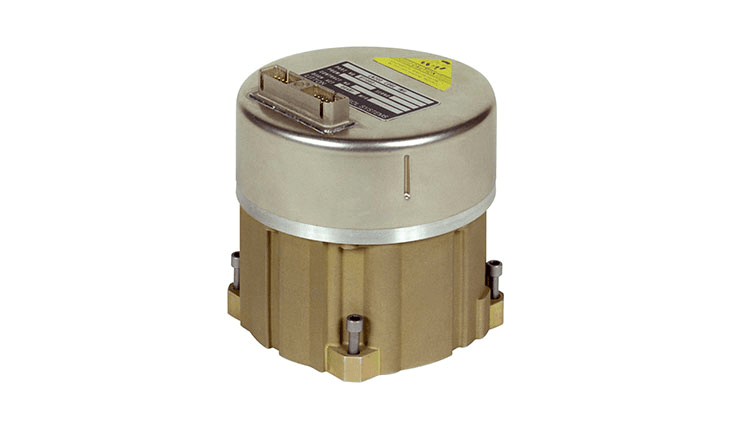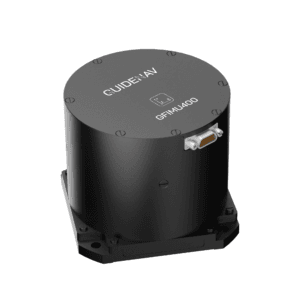The LN-200 series Fiber Optic Gyroscope (FOG) IMU has long been regarded as a reliable, battle-tested solution for tactical-grade inertial navigation. Deployed across thousands of platforms in aerospace, defense, and advanced guidance systems, it continues to serve missions where rugged performance is critical.
However, as modern systems demand tighter SWaP (Size, Weight, and Power) profiles, more flexible integration, and fewer export restrictions, the continued suitability of the LN-200 is increasingly being re-evaluated.
Here’s a clear-eyed look at where the LN-200 still delivers—and where newer IMUs may offer better value or performance.

Table of contents
What Are The Key Strengths Of The LN-200?
Despite its age, the LN-200 remains a robust and dependable choice in many military and aerospace applications. Its reputation is built on proven mechanical design, environmental resilience, and consistent inertial performance. Below are its primary strengths:
1. Field-Proven Performance
With over 40,000 units deployed globally, the LN-200 has earned credibility through sustained real-world performance. Its hermetically sealed, solid-state construction provides durability under extreme environmental and combat conditions.
2. Superior Gyro Performance
Thanks to its extended fiber coil, the LN-200 series delivers angle random walk down to 0.07°/√hr—still competitive for many mid- to high-end tactical applications.
3. Scalable Product Family
The LN-200 product line includes variants from the baseline model to the high-performance LN-200HP, allowing for mission-specific optimization without altering mechanical interfaces. This ensures easier upgrades and system compatibility.
4. Rugged Environmental Tolerance
Certified to MIL-STD standards, the LN-200 is qualified for shock loads up to 90g, vibration up to 15g RMS, and temperature extremes from -54°C to +71°C. This resilience makes it ideal for aerial, maritime, and mobile ground platforms.
5. Robust Sealed Construction
The LN-200 hermetically sealed, non-dithered FOG construction enables a high MTBF, long shelf life, and resistance to dust, humidity, and corrosion.
What Are the Major Limitations Of The LN-200?
While the LN-200 remains a capable IMU, it also reveals some significant drawbacks in the context of today’s system requirements—particularly in cost, power efficiency, and international usability.
1. High Lifecycle Cost
The LN-200 offers strong performance, but its upfront and operational costs are significantly higher than more modern, compact alternatives—especially in cost-sensitive or short-lifecycle programs.
2. Subject to ITAR Restrictions
As a U.S. defense-origin product, the LN-200 is controlled under ITAR. This restricts its use in many international programs and complicates global collaboration and procurement.
3. Limited Customization Flexibility
The LN-200 typically comes in fixed configurations, and customization—such as protocol adaptation or housing modification—often requires high MOQs. This makes it less flexible for low-volume integration or early-stage development.
Is There An Alternative Product?

Yes. The GuideNav GFIMU400 stands out as a high-performance, ITAR-free alternative to the LN-200. It delivers enhanced inertial precision, improved SWaP characteristics, and easier system integration across various applications.
| Parameter | LN-200 | GFIMU400 |
|---|---|---|
| Gyro Angle Random Walk (°/√hr) | 0.07–0.15 | 0.02 |
| Gyro Scale Factor Accuracy (ppm) | 100–500 | ≤30 |
| Power Consumption | 12W | 10.5W |
| Output Interface | RS-485 | RS-422 |
| Export Restrictions | ITAR-restricted | ITAR-free |

Key Advantages of GFIMU400
Power-Efficient for Mobile Platforms
With power consumption below 10.5W—compared to the LN-200’s 12W—the GFIMU400 is ideal for UAVs, robotics, loitering munitions, and other power-sensitive platforms.
ITAR-Free for Global Deployment
As a non-ITAR-controlled product, the GFIMU400 can be freely exported, making it an ideal solution for international defense projects, OEM partnerships, and UN missions without regulatory hurdles.
Cost-Effective for Volume Programs
While the LN-200 often commands a premium due to its legacy status, the GFIMU400 offers comparable performance at a more accessible price—ideal for large-scale production and cost-sensitive applications.
Flexible Customization and Low MOQ
GuideNav supports custom firmware, protocols, filtering, and mechanical adaptations with low minimum order quantities, enabling rapid prototyping and tailored integration—something the LN-200 typically cannot offer.
The LN-200 remains a dependable choice for legacy systems demanding long life and environmental ruggedness. However, for modern applications—such as UAVs, guided munitions, and autonomous vehicles—next-generation FOG IMUs like the GuideNav GFIMU400 provide substantial benefits in SWaP efficiency, precision, export flexibility, and integration readiness.
If your platform demands more than just durability—such as flexible architecture, reduced power consumption, and global availability—it’s time to consider a new class of tactical-grade FOG IMUs that go beyond the limitations of legacy systems.

